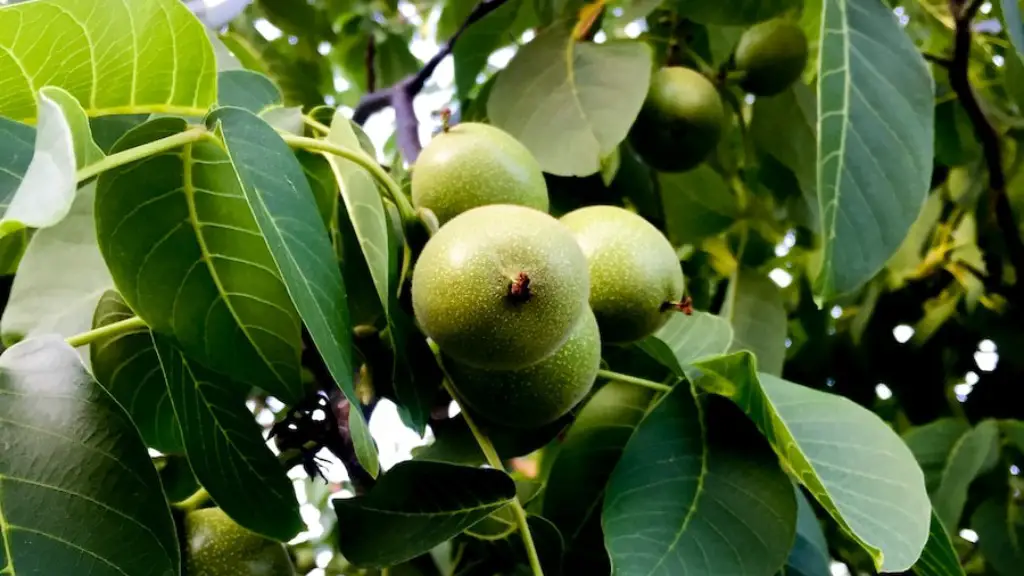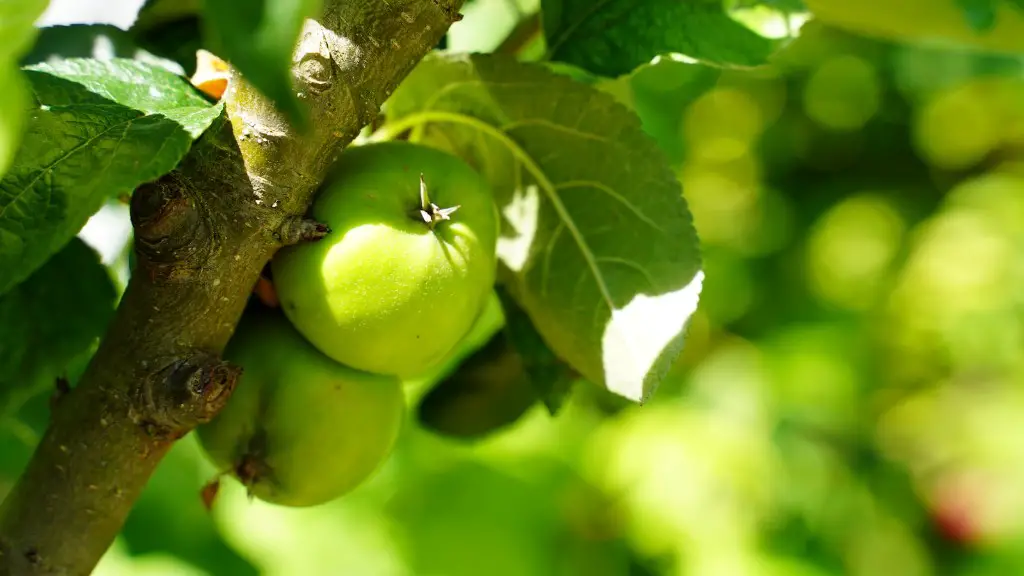Growing a lemon tree from seed can be a fun and rewarding experience, especially if you love the tart and tangy taste of fresh lemons. Lemon trees are naturally hardy and resilient, and with a little care and attention, they can thrive indoors. Here are a few tips on how to grow a lemon tree from seed indoors:
-Choose a plump, juicy lemon from the grocery store, and carefully remove the seeds.
-Rinse the seeds and let them soak in a bowl of water overnight.
-The next day, plant the seeds in a small pot filled with well-draining potting mix.
-Place the pot in a sunny spot and water regularly, keeping the soil moist but not soggy.
-After a few weeks, you should see the first signs of growth in the form of tiny sprouts.
-Continue to care for your lemon tree indoors, and soon you’ll be able to enjoy the sweet smell and juicy fruits of your very own lemon tree!
To grow a lemon tree from a seed indoors, start by putting the seed in a bowl of water to soak for 24 hours. Then, drain the seed and wrap it in a damp paper towel before putting it in a plastic baggie. Put the baggie in the refrigerator for 3-4 weeks, checking on the seed periodically to make sure it stays moist. After the chilling period, plant the seed in a pot filled with well-draining potting mix. Place the pot in a sunny spot and water regularly, keeping the soil moist but not soggy. With proper care, your lemon tree should start to sprout in 4-6 weeks.
How long does it take to grow a lemon tree from seed indoors?
Lemon trees are a great addition to any home garden, as they not only provide delicious fruit, but also grow relatively quickly. In just 3 years, a lemon tree can go from a seedling to producing full-sized lemons, making it well worth the effort. Plus, the beautiful foliage and fragrant blossoms make lemon trees a pleasure to have around.
Lemon trees grow best in full sun and well-drained soil. They are relatively drought tolerant once established, but young trees will need regular watering.
Lemon trees go through four main growth stages: seed germination, vegetative growth, flowering, and fruiting.
Seed germination usually takes place 2-3 weeks after planting. Once the seeds have germinated, the seedlings will need to be transplanted into individual pots.
Vegetative growth is the stage where the seedlings develop into young trees. During this stage, the trees will need to be watered regularly and fertilized every few weeks.
Flowering typically occurs after the trees have been in the ground for 1-2 years. Once the trees start blooming, they will need to be pollinated in order to set fruit.
Fruiting usually takes place 1-2 years after flowering. Once the fruits are mature, they can be harvested.
How hard is it to grow a lemon tree indoors
Lemons generally do well in front of unobstructed south- or southwest-facing windows. You can also add artificial light if needed. Temperature: Indoor lemon trees grow best with nightly temperatures near 65 degrees Fahrenheit, which suits most homes fine.
Lemons from the grocery store can inexpensively provide seeds to grow lemon trees. Depending on the cultivar, freshness of the seed and growing conditions, fruit production from seed-grown lemon trees can take from five to 15 years.
What is the fastest way to germinate a lemon seed?
If you are looking to speed up the germination process of your lemon seeds, you can try soaking them in warm water overnight or peeling off their skin. The seeds will germinate faster if the sprouts don’t have to break through the seed’s skin.
This Meyer Lemon Tree is approximately 2-3 feet tall and is a great addition to any home. This tree is known for its delicious lemons and is sure to produce plenty of fruit for your family to enjoy.
What happens if you don’t soak seeds before planting?
If you soak your seeds before planting, the germination time decreases, and the germination rate increases. Seeds that have a continual flow of moisture to uptake have much higher chances of success.
Citrus seeds need bright light to germinate, but they don’t need direct sunlight. This is because the seeds contain a small amount of chlorophyll, which allows them to photosynthesize their own food. However, if the seedlings are grown in too much shade, they will become etiolated and weak.
How deep do you bury lemon seeds
To make the most of your lemons, be sure to side squeeze them before juicing! This will help to release more of the delicious lemon juice, while also leaving the seeds behind. Enjoy your homemade lemonade!
Lemon trees are particularly vulnerable to cold and drought when grown in containers. This is because they have a hardiness zone that is one zone higher than the USDA recommended zone. As a result, they are more likely to experience frost and cold damage.
Do lemon trees grow well in pots?
Growing a potted lemon tree indoors is a great way to have fresh lemons all year long. Lemons are a self-pollinating fruit, so only one tree is needed to produce fruit. cooler weather during the fall and winter months, make sure to place the tree near a sunny window. Keep the soil moist, but not soggy and fertilize monthly. With a little attention, you can enjoy fresh lemons all year long!
You should not plant a new citrus tree in a large container because the tree’s small root system may rot and cause the tree to die. Instead, plant the tree in an 8-inch diameter container and then transplant it to a larger container when it is two to three years old.
How do you germinate lemon seeds in a paper towel
You should place the seed on the kitchen towel, and dampen the towel with water. Then, turn the paper three times so the paper covers it from all sides. Next, place it inside the plastic bag and put the plastic bag in a warm, dark place.
You are best planting the seed as soon as possible after harvesting the pips from the fruit. If you need to wait, however, you can put the seeds in a glass of water overnight and then plant the following day.
How do you prepare lemon seeds before planting?
Assuming you would like tips on how to properly peel fruits and vegetables:
-First, wash the fruit or vegetable with soap and water to remove any dirt or bacteria.
-Next, cut off any bruised or damaged parts of the fruit or vegetable.
-Then, using a sharp knife or peeler, peel off the skin of the fruit or vegetable.
-Finally, chop the fruit or vegetable into the desired size pieces.
It is best to plant lemon seeds in the springtime. Moisten the potting soil so that it is damp, but not soaked, all the way through. Fill the smaller pot with soil, all the way up to an inch below the rim. Cut open your lemon and remove a seed. Do not delay to plant. Spray the soil that is directly above the seed gently with water from a spray bottle.
Are coffee grounds good for lemon trees
Lemon trees benefit from the nitrogen and calcium in the coffee grounds. The organic material also improves the soil tilth. Only use the coffee grounds after they have been fully decomposed in the compost pile.
Most citrus trees will eventually reach a height of 6 feet, even with regular pruning. Dwarf varieties may not grow as tall, but will still require regular pruning to maintain a manageable size.
Warp Up
To grow a lemon tree from seed indoors, you will need a seed-starting kit, potting soil, a container, and a lemon seed. Start by soaking the lemon seed in warm water for 24 hours. Then, fill the container with potting soil and make a small hole in the center. Plant the seed in the hole and cover it with soil. Water the seed lightly and place the container in a warm, sunny spot. Keep the soil moist and wait for the seed to germinate, which can take up to two weeks. When the seedling appears, thin it out so that only the strongest one remains. Continue to water and care for your lemon tree and it should begin to produce fruit in two to three years.
To grow a lemon tree from seed indoors, you will need to start with a fresh lemon. Cut the lemon in half and remove the seeds. Plant the seeds in a pot filled with potting soil, and place the pot in a sunny location. Water the seeds regularly, and in a few weeks, you should see new growth. Once the seedlings are a few inches tall, you can transplant them into individual pots. Continue to care for your lemon trees, and you’ll soon be able to enjoy fresh lemons right from your own home!



